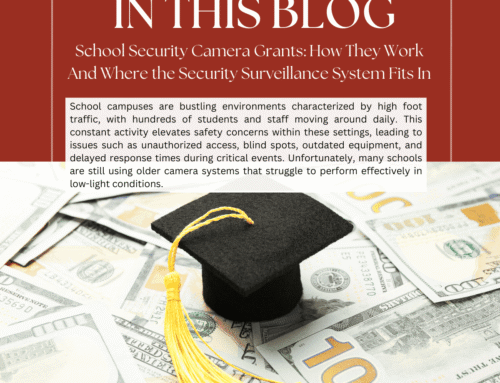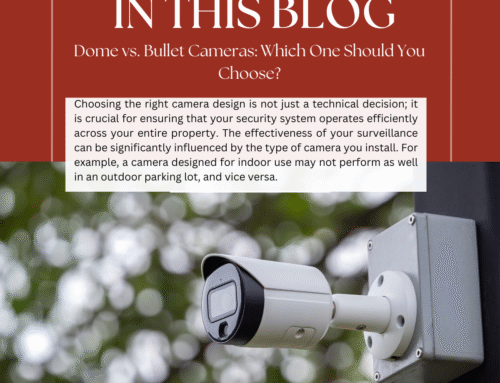AI & Biometrics in Access Control: The Future of Security?
AI & Biometrics in Access Control: The Future of Security?
Redefining Access Control in a Hyper-connected World
In today’s digital world, security has never been more critical. Traditional access methods such as keys, PINs, and swipe cards are increasingly vulnerable to loss, theft, and duplication.
As a result, businesses and homeowners alike are embracing AI-driven bio-metric access control systems — a modern solution that combines artificial intelligence and bio-metric authentication for unmatched precision, convenience, and reliability.
From homes in Fort Collins to corporate offices in Denver, this new wave of intelligent access control is shaping the future of security — offering smart, adaptive, and user-friendly protection across Colorado and beyond.
What Are Bio-metric and AI-Based Access Control Systems?
Bio-metric Authentication
Bio-metric systems use unique human identifiers such as fingerprints, facial recognition, voice patterns, iris scans, or even gait to verify identity.
When combined with AI, these systems achieve accuracy rates above 99%, offering authentication that’s non-transferable, tamper-proof, and permanent.
AI Integration
AI enhances bio-metrics by providing real-time analysis, anomaly detection, continuous learning, and behaviour-based decision-making.
Together, these technologies deliver seamless access control while maintaining rigorous security standards — ideal for smart homes, offices, medical facilities, and educational campuses.
Why Are Organisations Shifting Toward AI Bio-metrics?
Market Growth & Adoption Trends
-
The global bio-metric market is projected to grow from USD 45 billion in 2024 to USD 173 billion by 2033 — a CAGR of 14.4%.
-
The AI-enabled bio-metric sector will nearly double in size, from USD 24 billion in 2023 to USD 51.8 billion by 2033.
-
According to HID Global, 35% of organisations currently use bio-metric authentication, while 13% more plan to adopt it soon.
-
Mobile credentials are rapidly rising — two-thirds of security leaders are implementing smartphone-based access solutions.
Key Drivers of Adoption
1. Enhanced Security and Fraud Prevention
Industries such as finance, government, and healthcare are increasingly adopting bio-metrics to prevent credential theft and unauthorised access.
2. IoT and Smart Building Integration
Bio-metric systems can integrate with IoT networks, connecting seamlessly with lighting, HVAC, video surveillance, and analytics systems.
3. Efficiency and Sustainability
AI-driven access systems eliminate plastic cards and paper logs, cutting waste and administrative costs by up to 25%, while supporting corporate sustainability goals.
Advantages of AI-Powered Bio-metric Access Control
-
Unmatched Accuracy: AI algorithms minimise false positives and adapt to user behaviour or appearance changes.
-
Contactless & Friction-less Entry: Facial and mobile recognition enable fast, hygienic access.
-
Real-Time Threat Detection: AI detects anomalies like tailgating or unauthorised access attempts instantly.
-
Unified Security Management: Cloud-based dashboards integrate video, alarm, and access systems into one smart interface.
-
Operational & Environmental Benefits: Mobile and cloud credentials reduce plastic waste and maintenance costs, improving sustainability.
Industry Applications of AI Bio-metrics
Corporate Offices
AI bio-metric access systems simplify employee entry and attendance tracking. Staff can securely enter using fingerprint or facial recognition, boosting productivity and minimising manual verification.
Healthcare Facilities
Hospitals and clinics rely on bio-metrics to protect patient data and control access to restricted areas. These systems support HIPAA compliance and reduce security risks.
Educational Institutions
Schools and universities use bio-metric access to manage attendance, restrict sensitive areas, and maintain campus safety.
Government Buildings
For government agencies handling sensitive data, AI-powered bio-metric systems provide top-tier protection, ensuring only authorised personnel can access critical zones.
Challenges and Best Practices
1. Data Privacy and Compliance
Organisations must comply with privacy regulations such as GDPR and CCPA. Collecting bio-metric data requires user consent, transparency, and secure data storage.
2. Addressing AI Bias
AI models must be trained with diverse datasets to prevent gender, racial, or age-related bias. Regular audits and retraining improve fairness and accuracy.
3. Choosing the Right Installation Partner
Partnering with a trusted provider like Security Surveillance System ensures proper installation, ongoing maintenance, and full regulatory compliance. Our experts deliver custom bio-metric access solutions designed for Colorado businesses, schools, and institutions.
What’s Next? The Future of AI and Bio-metrics by 2030
-
Multi-Modal Bio-metrics: Combining fingerprint, iris, and behavioural traits for stronger identity verification.
-
Continuous Authentication: AI continuously verifies identity through user behaviour, device interaction, and environment.
-
Edge AI Processing: On-device AI will boost speed, reduce latency, and protect privacy.
-
Blockchain Integration: Secure, decentralised identity systems will enhance transparency and trust.
-
Predictive Access Control: AI will adjust permissions dynamically based on user history, location, and behaviour.
-
Deepfake Defence: Advanced algorithms will detect spoofing attempts, ensuring genuine bio-metric validation.
Frequently Asked Questions (FAQs)
1. Are AI bio-metric systems secure against hacking?
Yes. Modern systems use liveness detection, encryption, and layered AI defenses to prevent breaches and spoofing.
2. What if the system doesn’t recognise someone?
AI adapts through retraining. Backup access methods like PINs or keycards ensure smooth operation.
3. Is bio-metric access control legal?
Yes, when compliant with privacy regulations and proper consent protocols. Most private commercial uses are fully legal.
4. Can small businesses use AI-based bio-metrics?
Absolutely. Cloud-based and mobile-enabled platforms make this technology scalable and affordable for small and mid-sized businesses.
5. Do existing systems need full replacement?
Not necessarily. Many AI bio-metric solutions integrate with current CCTV and alarm systems via APIs.
Conclusion: Integrating Intelligence into Security
AI and bio-metric access control are no longer futuristic — they’re today’s security standard.
For organisations across Colorado and beyond, this technology offers unmatched accuracy, efficiency, and adaptability. Despite challenges around privacy and cost, the advantages far outweigh the limitations.
At Security Surveillance System, we help homes, offices, and campuses transition to intelligent, AI-powered access control solutions that ensure long-term protection and compliance.
Whether you’re in Boulder, Denver, or Colorado Springs, our team delivers custom, scalable, and future-ready bio-metric systems that safeguard your people, property, and peace of mind.















